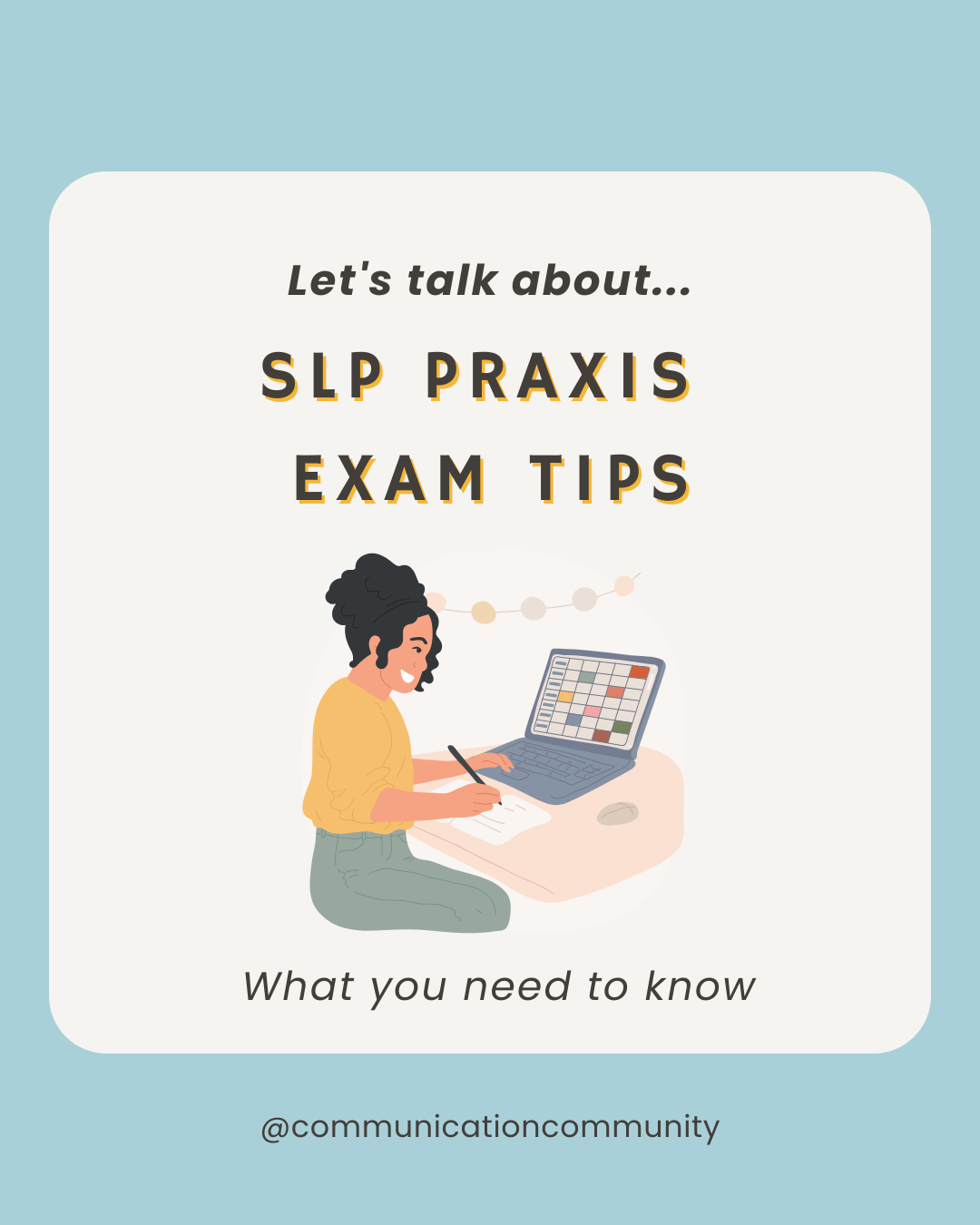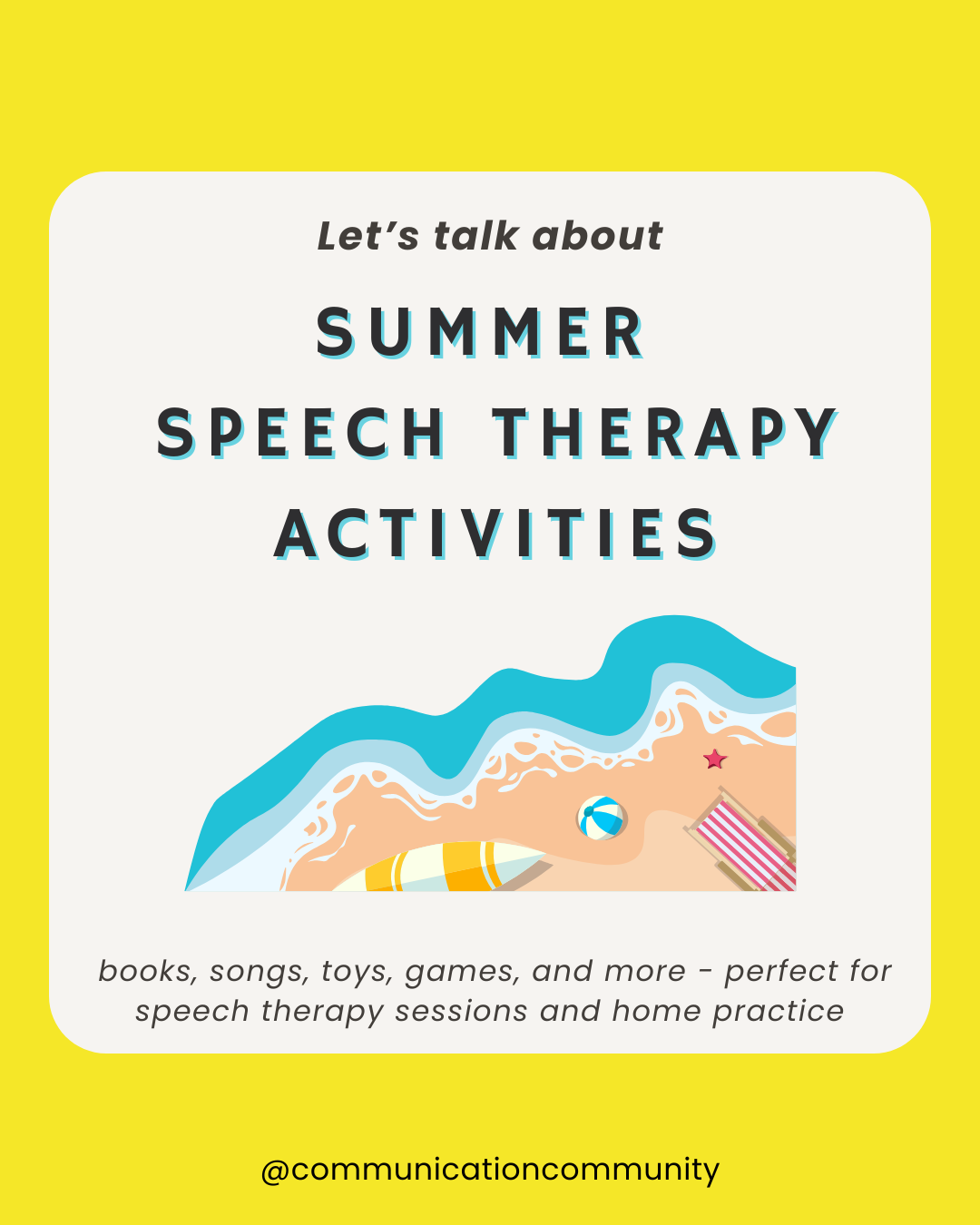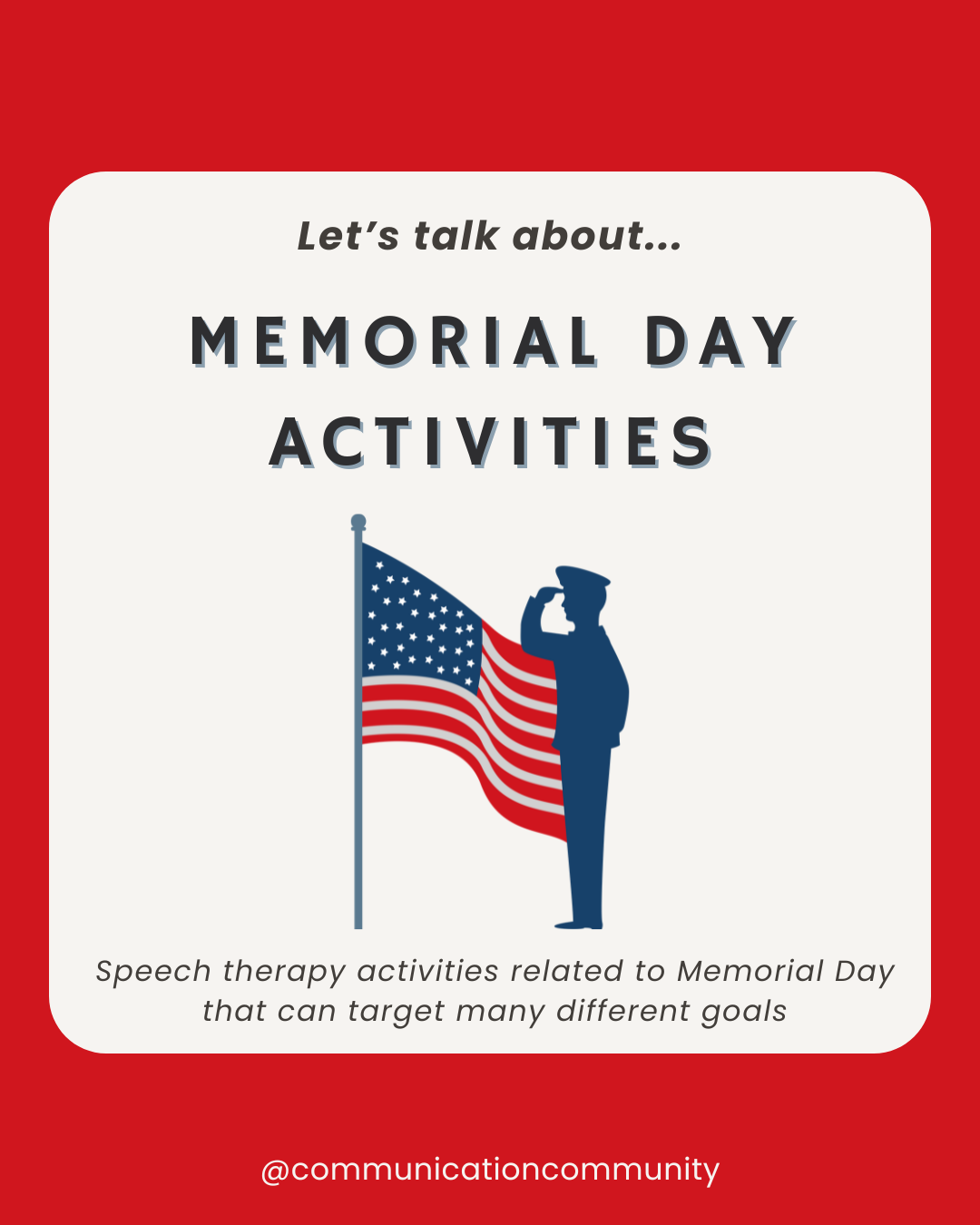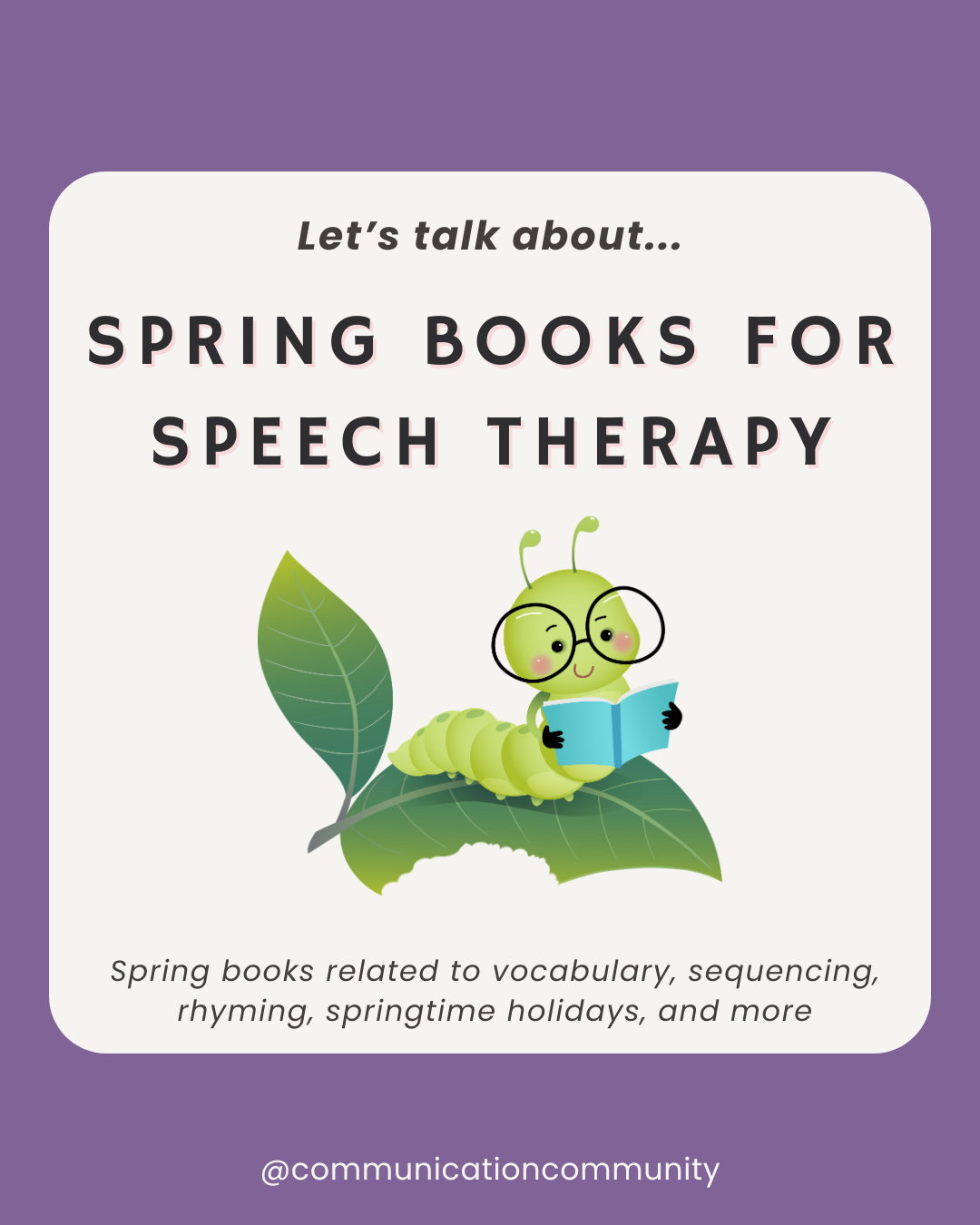Creating effective speech therapy goals is essential for measurable progress and meaningful outcomes. Whether you’re an SLP writing IEP goals, a clinician in a private practice, or a caregiver learning how to support your child’s goals, this guide will walk you through the process from start to finish.
Save Time with Our Goal Banks
Find comprehensive goal banks and resource packets for AAC, early intervention, language, self-determination, speech sound disorders, stuttering, and more! Access these resources through our Communication Community membership or on our TPT store, where you can save time and explore thousands of customizable goal combinations.

The Importance of Thoughtfully Written Speech Goals
Speech therapy goals guide interventions and ensure progress is clear and achievable. They also hold the care team accountable, offering a roadmap for development. Effective goals reflect the individual’s real-world communication needs, ensuring therapy is functional and personalized.
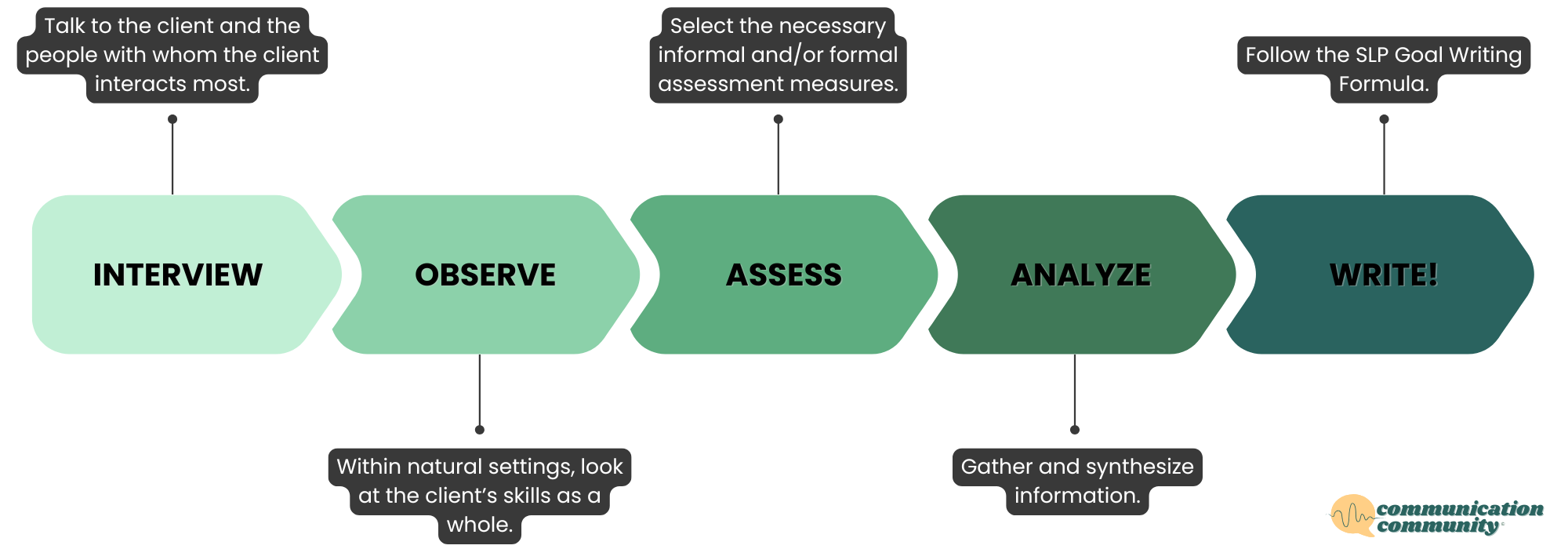
Collaborating with Caregivers and Team Members
Parents/caregivers and other team members are invaluable when setting goals. They offer insights into skills that may not appear during assessments but are important in daily life (e.g., insight into home routines and mealtime). Teachers and other professionals, especially in schools, can also provide key observations on skills across various settings. This information can be collected through meetings, interviews, or questionnaires, many of which serve as informal assessment tools - this will be discussed more in the next section.
Example Insights from Caregivers and Educators
Observable strengths and areas for growth may include:
- Social Communication: Initiating requests for help when needed.
- Emotional Regulation: Adjusting vocal volume appropriately across environments (e.g., loud outside but soft in the classroom).
- Daily Routines: Completing multi-step sequences independently, such as preparing for bed.
- Literacy: Demonstrating strong listening comprehension but benefiting from support with written tasks.
These observations provide essential context when planning therapy goals. They offer real-world insights that complement other information/formal evaluations, ensuring therapy addresses practical skills. This information helps bridge the gap between home, school, or other environments, guiding decisions about which assessments will be most relevant and how to prioritize targeted goals.
Selecting Assessment Measures
The next step is choosing the right combination of assessments to inform goal-setting. Using both formal and informal assessments ensures a well-rounded understanding of the individual’s abilities.
- Informal Tools: Caregiver questionnaires, ethnographic interviews, language samples, teacher input, and clinical observations offer insight into how the individual communicates in natural environments. These tools highlight strengths and areas of support that may not appear in formal testing.
- Formal Tools: Standardized assessments and certain screeners can provide measurable data to confirm specific areas of need.
Dynamic assessments—such as observing how the individual responds to prompts or cues—can also reveal which strategies promote success. Together, these assessments guide the creation of personalized, functional therapy goals that reflect real-world communication needs.
Synthesizing Information to Set Priorities
After gathering assessment data, identify key areas to target. Prioritize functional communication goals that align with the individual’s needs (e.g., Common Core State Standards for younger students and vocational communication for older students). Set a reasonable number of achievable goals based on the available timeframe. For example, school-based IEP goals often span a year, while goals in medical settings may cover several weeks.
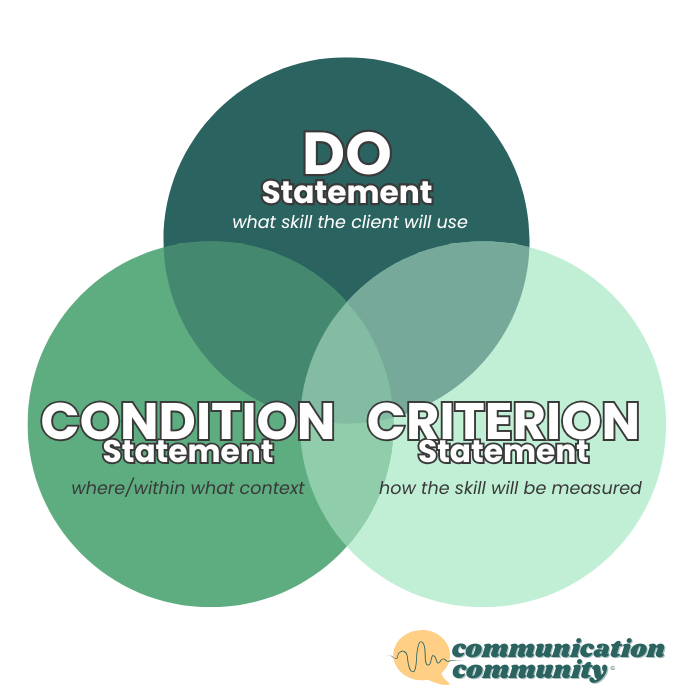
Writing Using the Goal-Writing Framework: DO + CONDITION + CRITERION
This formula helps create clear, measurable, and functional speech therapy goals by specifying what the client will do, under what conditions, and to what extent. Below, each statement type includes examples organized by various language areas.
1. DO Statement
The DO Statement defines the specific skill or behavior the client will perform.
- Example 1: [Client] will answer “who” and “where” questions after listening to a short story. (Receptive Language)
- Example 2: [Client] will produce the phoneme /r/. (Articulation)
- Example 3: [Client] will use a repair strategy (e.g., repeat or rephrase message) on their AAC system. (AAC/Strategic Competency)
2. CONDITION Statement
The CONDITION Statement describes the context in which the skill will be targeted. This ensures the skill is practiced in meaningful, relevant settings. If suitable, cues or prompts may also be included within this area.
- Example 1: During structured group/individual activities.
- Example 2: At the initial word level, with visual and verbal cues.
- Example 3: During routines with family members.
3. CRITERION Statement
The CRITERION Statement specifies how progress will be measured, providing a clear benchmark for success. Note: some examples include consistency*.
- Example 1: With 80% accuracy across three consecutive sessions.
- Example 2: In 4 out of 5 opportunities over two weeks.
- Example 3: Independently in 9 out of 10 trials.
*Mastery and Consistency
In many cases, a goal may not be considered "mastered" until the client demonstrates consistent performance over time. Consider adding a CONSISTENCY Statement, such as achieving the goal across three consecutive sessions, to ensure sustainable progress.
Combining DO + CONDITION + CRITERION
Here are complete examples of well-written goals:
- Receptive Language: [Client] will answer “who” and “where” questions after listening to a short story, during structured group activities, with 4 out of 5 correct responses, over two weeks.
- Articulation: [Client] will produce the phoneme /r/ at the word level, with visual and verbal cues, with 90% accuracy, across 3 consecutive sessions.
- AAC/Strategic Competency: [Client] will use a repair strategy (e.g., rephrasing a message) during family routines, independently in 9 out of 10 trials.
Finding the right level of specificity: The examples provided above are intentionally broad to demonstrate the goal-writing framework, but specificity can enhance clarity and effectiveness. Don’t hesitate to be more precise if it aligns with the client’s needs and is achievable.
Wrapping It Up: Writing Speech Therapy Goals That Work
Creating effective goals isn’t just about checking boxes—it’s about making a real difference in someone’s communication journey. Whether you’re knee-deep in IEP season, setting new goals in private practice, or helping a family understand what to expect from therapy, having a solid framework makes life easier.
Remember: collaboration, assessments, and the right amount of specificity are key. And hey, if goal writing still feels like a lot, we’ve got you covered—our goal banks and templates are ready to make your planning easier. Check them out through our Communication Community membership! You’ve got this!
Goal Blog Posts
Check out our other domain-specific goal banks for speech and language areas!
- How to Write AAC Goals
- How to Write Aphasia Goals
- How to Write Articulation Goals
- How to Write Cluttering Goals
- How to Write Early Intervention Goals
- How to Write Executive Function Goals
- How to Write Expressive Language Goals
- How to Write Figurative Language Goals
- How to Write Fluency (Stuttering) Goals
- How to Write Phonological Awareness Goals
- How to Write Play Skills Goals
- How to Write Pragmatic Language Goals
- How to Write Receptive Language Goals
- How to Write Self-Determination Goals
- How to Write Voice (Pediatric) Goals

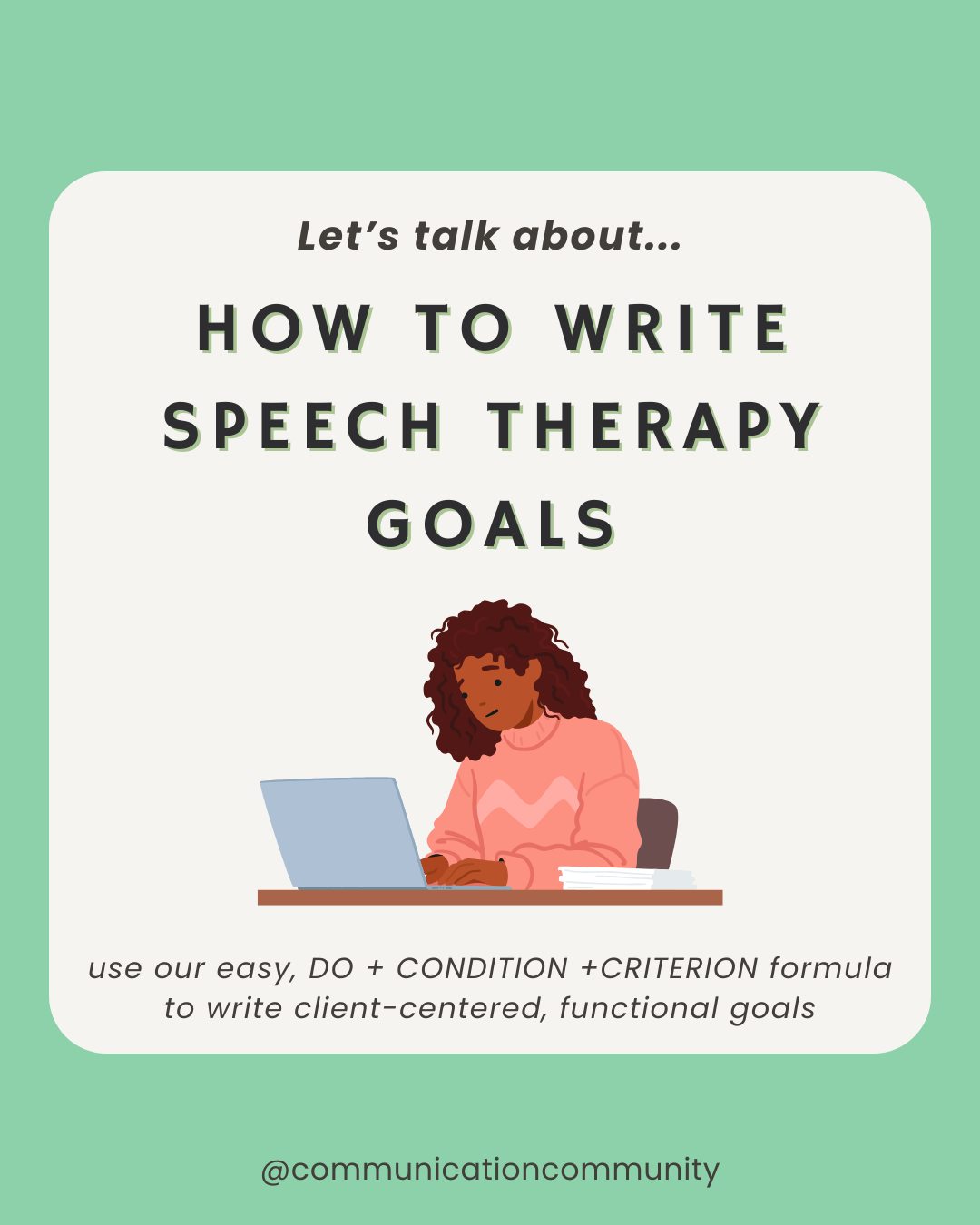
![How to Write Apraxia Goals [with goal bank]](https://www.communicationcommunity.com/content/images/2024/07/Apraxia-Goals--1-.png)
